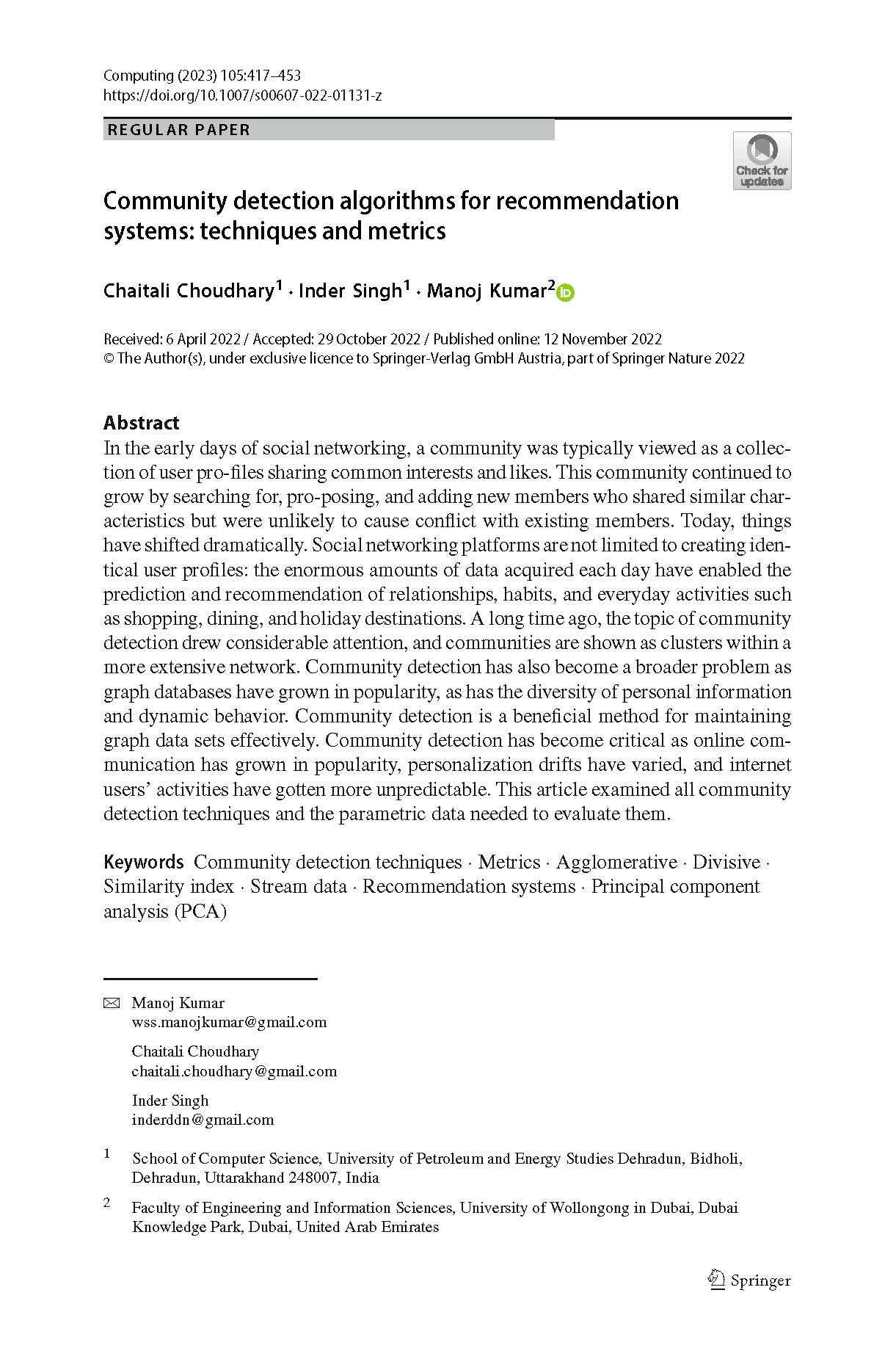Community detection algorithms for recommendation systems
techniques and metrics
Article Ecrit par: Kumar, Manoj ; Choudhary, Chaitali ; Singh, Inder ;
Résumé: In the early days of social networking, a community was typically viewed as a collection of user pro-files sharing common interests and likes. This community continued to grow by searching for, pro-posing, and adding new members who shared similar characteristics but were unlikely to cause conflict with existing members. Today, things have shifted dramatically. Social networking platforms are not limited to creating identical user profiles: the enormous amounts of data acquired each day have enabled the prediction and recommendation of relationships, habits, and everyday activities such as shopping, dining, and holiday destinations. A long time ago, the topic of community detection drew considerable attention, and communities are shown as clusters within a more extensive network. Community detection has also become a broader problem as graph databases have grown in popularity, as has the diversity of personal information and dynamic behavior. Community detection is a beneficial method for maintaining graph data sets effectively. Community detection has become critical as online communication has grown in popularity, personalization drifts have varied, and internet users' activities have gotten more unpredictable. This article examined all community detection techniques and the parametric data needed to evaluate them.
Langue:
Anglais
Thème
Informatique
Mots clés:
Principal component analysis (PCA)
Metrics
Recommendation systems
Community detection techniques
Agglomerative
Divisive
Similarity index
Stream data

